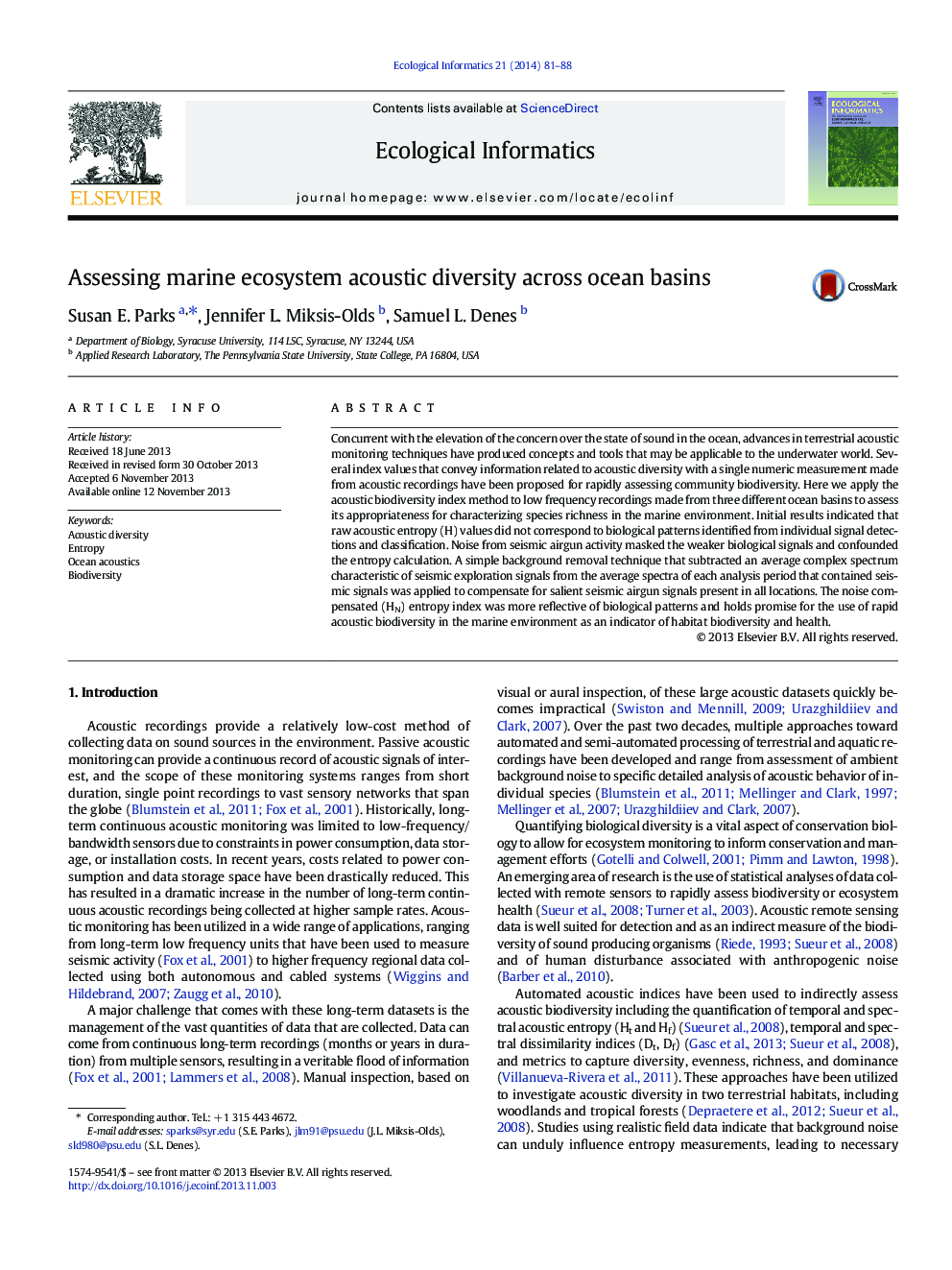| Article ID | Journal | Published Year | Pages | File Type |
|---|---|---|---|---|
| 4374898 | Ecological Informatics | 2014 | 8 Pages |
•Automated assessment metrics applied to assess marine ecosystem health.•Acoustic diversity entropy indices calculated for recordings from 3 oceans.•Human generated sounds dominated raw entropy measurements.•Noise reduction improved the biological relevance of entropy measurements.•Seasonal and regional changes in acoustic diversity detected.
Concurrent with the elevation of the concern over the state of sound in the ocean, advances in terrestrial acoustic monitoring techniques have produced concepts and tools that may be applicable to the underwater world. Several index values that convey information related to acoustic diversity with a single numeric measurement made from acoustic recordings have been proposed for rapidly assessing community biodiversity. Here we apply the acoustic biodiversity index method to low frequency recordings made from three different ocean basins to assess its appropriateness for characterizing species richness in the marine environment. Initial results indicated that raw acoustic entropy (H) values did not correspond to biological patterns identified from individual signal detections and classification. Noise from seismic airgun activity masked the weaker biological signals and confounded the entropy calculation. A simple background removal technique that subtracted an average complex spectrum characteristic of seismic exploration signals from the average spectra of each analysis period that contained seismic signals was applied to compensate for salient seismic airgun signals present in all locations. The noise compensated (HN) entropy index was more reflective of biological patterns and holds promise for the use of rapid acoustic biodiversity in the marine environment as an indicator of habitat biodiversity and health.
